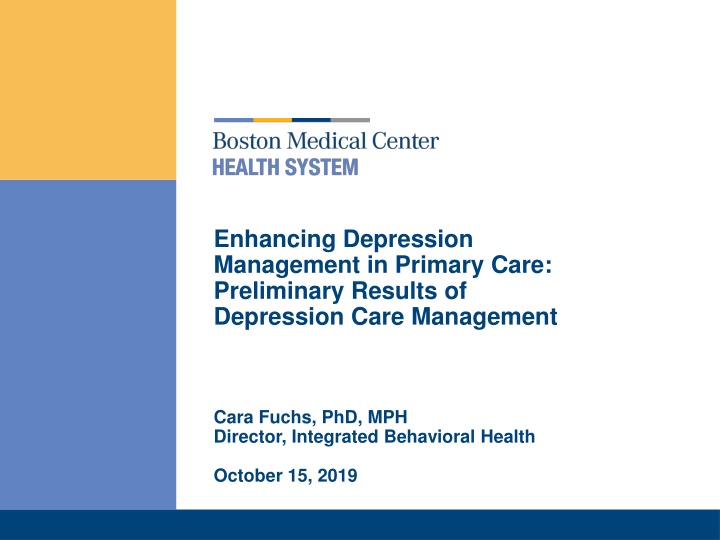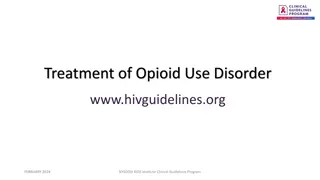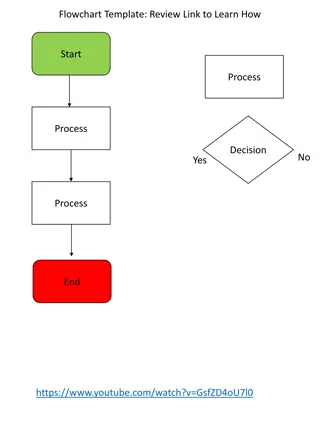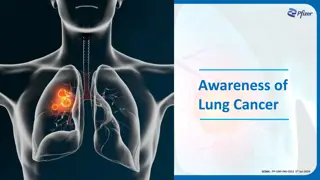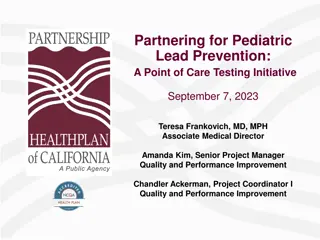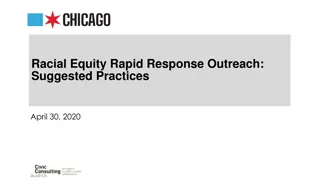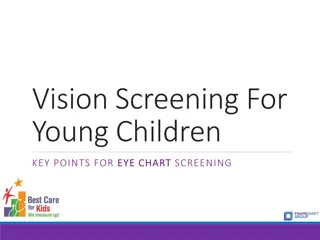Adult Airways: Screening, Testing, and Treatment Guidelines
Dentists play a crucial role in screening and managing adult airway health, with a focus on diagnosing sleep-related disorders such as obstructive sleep apnea (OSA). This involves initial screening, comprehensive assessments, diagnostic testing like PAP compliance monitoring, referral protocols, and collaboration between medical and dental teams for effective patient care.
Download Presentation

Please find below an Image/Link to download the presentation.
The content on the website is provided AS IS for your information and personal use only. It may not be sold, licensed, or shared on other websites without obtaining consent from the author.If you encounter any issues during the download, it is possible that the publisher has removed the file from their server.
You are allowed to download the files provided on this website for personal or commercial use, subject to the condition that they are used lawfully. All files are the property of their respective owners.
The content on the website is provided AS IS for your information and personal use only. It may not be sold, licensed, or shared on other websites without obtaining consent from the author.
E N D
Presentation Transcript
Enhancing Depression Management in Primary Care: Preliminary Results of Depression Care Management Cara Fuchs, PhD, MPH Director, Integrated Behavioral Health October 15, 2019
ACO priorities highlight the need for an emphasis on depression screening and treatment in General Internal Medicine and other primary care practices Depression is the predominant behavioral health need of ACO patients 75% of those with a behavioral health need have a diagnosis of Major Depression Clinical importance of depression Individuals with depression aremore likely to use acute services, less likely to adhere to treatment regimens, and incur higher annual Medicaid costs1 # of members age 12-64 with arrived outpatient visit screened for depression with a validated tool, and if initial screening is positive, receive a follow up plan documented in EMR on the same date of positive screen Quality Metric: Depression screening and follow up* % of members age 12-64 with diagnosis of depression (initial PHQ-9 score >9) that achieve remission (PHQ9 <6) or response (reduction of elevated PHQ-9 score by 50%) Based on documented PHQ-9 score between 4-8 months after initial PHQ-9 score Quality Metric: Depression remission and response* 1Greenberg, P, et al. (2003). The economic burden of depression in the United States: How did it change between 1990 and 2000? Journal of Clinical Psychiatry, 64(12), 1465-1475. *metrics and targets not yet finalized by State; projected to be pay for performance in January 2020 2
We have implemented an evidence-based* telephonic depression care management pilot program in General Internal Medicine Evidence-based Depression Care Management model* How we integrated into our BH model Evidence-based, population based, systematic approach to screening, treatment, and monitoring (using PHQ-9) of patients with depression Filled vacant social work clinician roles with hybrid position, with split time between telephonic depression care management and traditional scheduled visits Stepped care model: Telephonic, protocolized clinical intervention for patients at low risk of harm to self/others Triage to higher intensity care if clinically indicated Utilized consulting psychiatrist and psychologist time during weekly case consultation meeting; consulting clinicians do not see the patient Educated primary care providers on program; designed to support PCPs with minimal added administrative burden Care management team of depression care manager (social work clinician), consulting psychiatrist/psychologist, and primary care provider Clinical IBH champion 3 *Unutzer J et al, JAMA 2000.
Depression Care Manager works closely with clinical care team to ensure patients symptoms are improving and facilitate care transitions if needed Consulting Psychiatrist and Psychologist Depression Care Manager Primary Care Provider Targeted telephonic brief clinical intervention Co-manage depression with IBH clinician: Care planning, treatment changes Caseload consultation for care manager and PCP; does not usually see patients face to face Tracking of progress using PHQ-9 Transition to primary care management once patient is stable Diagnostic consultation on difficult cases, with face to face visit for most at-risk Support anti-depressant medication adherence Refer back to Depression Care Manager if patient relapses Facilitate treatment change or referral if needed Recommendations for additional treatment / referral according to evidence-based guidelines Relapse prevention Patients identified through monthly report: PHQ-9 score >9, diagnosis of depression Managed primarily using Excel in pilot phase Building flowsheet and reporting options in EMR 4
Patients have responded positively to outreach and have actively engaged in Depression Care Management Process metrics: Outreach and engagement 53 58% engaged in depression care management 79% engaged in some form of treatment 31 11 5 3 3 Total Actively engaged in depression care mgmt1 Chose talk therapy Could not reach Declined all treatment Lost to follow up candidates 1At least two telephonic encounters over at least four weeks
Early results are promising, with 45% of patients achieving a clinically significant reduction in their depressive symptoms Early outcome metrics: Response and remission 31 Clinically significant reduction in PHQ-9 17 Average initial PHQ-9: 16.4 Average PHQ-9 change: -6.7 9 5 Results are similar to randomized control trial data1 Actively engaged No remission or response yet; continue intervention Response: at least 50% reduction in PHQ-9 score Remission: Last PHQ-9 score under 5 1Unutzer J et al, JAMA 2000.
Patients engaged in the program report significant improvement in ability to manage symptoms and engage in care 52 year old male, obesity (BMI=52), chronic back pain, pre-diabetic Spanish speaking with limited English proficiency Patient history Multiple referrals to behavioral health clinicians, no-showed 100% of behavioral health appointments over 3 years Major Depression diagnosis, with initial PHQ-9 score of 12 Worked with consulting Psychiatrist and PCP to change medications Telephonic intervention (4 months) Supported patient with pain management, clinical therapy techniques Encouraged medication adherence Achieved depression remission (PHQ-9 of 5) Outcomes to date Working with PCP and BMC Food Pantry to manage pre-diabetes Reports increased physical activity and ability to cope with back pain 7
Challenges and lessons learned Importance of workforce development of care managers: Education and support on population-based, stepped care model Sensitivity and flexibility required with varying levels of PCP experience in managing depression We are engaging patients that would otherwise fall through the cracks Managing PCP expectations and engaging PCPs Development of relationships between PCP and Care Managers takes time, is critical to success Ease of effective communications (EMR, in person, etc.) facilitates adaptation of model PCPs initially given an opt-out option only as a way to set program up for success Administrative/operational considerations Clinic and departmental leadership support Tracking of clinical outcomes and patient management can be managed manually in pilot phase using Excel Up-front investment of operational staff time for protocols, training, data management, etc. 8
